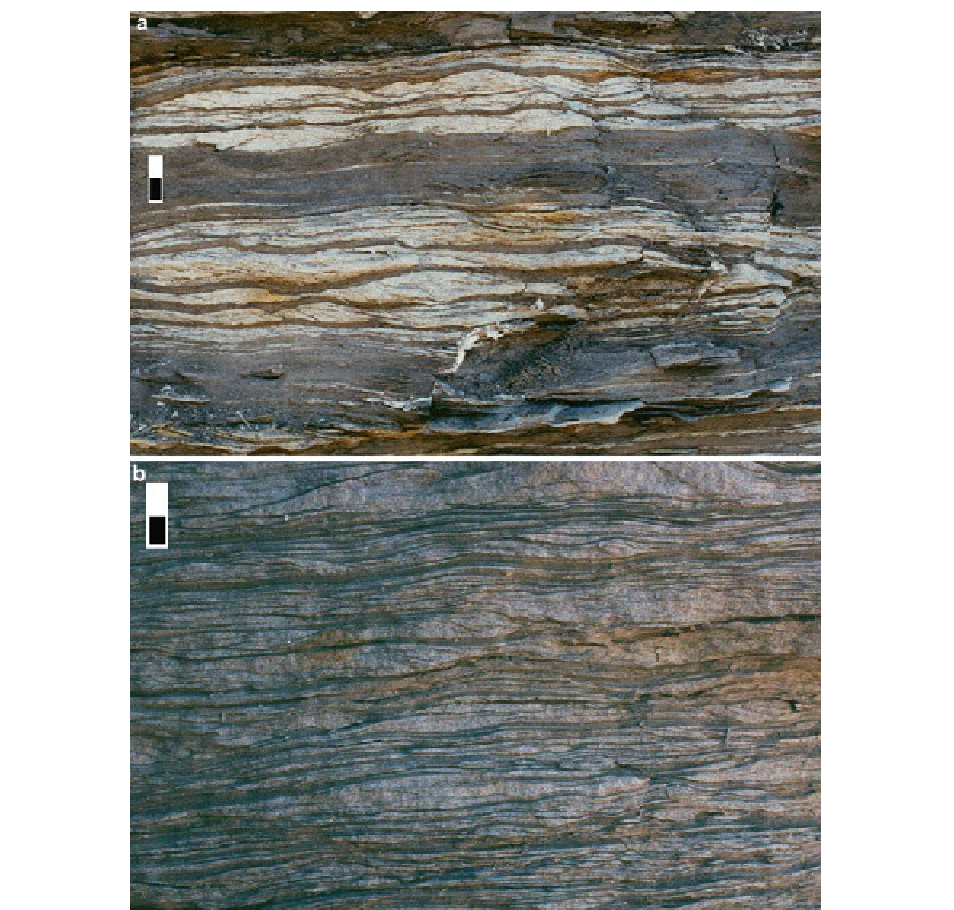Geology Reference
In-Depth Information
Fig. 16.5
Ripple-dominated rhythmites from western Kentucky
(Tradewater Formation) showing prominent cm-scale bundling,
which is interpreted as annual cyclicity. (
a
) Outcrop view of
non-weathered rhythmites. Thick mud-rich zones contain mm-
thick streaks of sandstone. (
b
) Thick mud-rich zones separated
by ripples with rounded crests
preserved (Archer and Maples
1984
; Maples and Archer
1987
). Also, a variety of intricate and well-preserved
erosional and depositional sedimentary structures,
such as foam casts, have been described by Lanier
et al. (
1993
) from laminated rhythmites in Kansas.
A diverse suite of similar features has been described
from modern hypertidal settings and directly compared
to the strata deposited during the Pennsylvanian Period
(Tessier et al.
1995
; Archer
2004
).
Most occurrences of the heterolithic tidal-flat facies
in the Pennsylvanian of the EIB and WIB directly
overlie coal seams and are in turn, overlain by gray
shale (marine) or shales that coarsen upward into
heterolithic strata or sandstone. In some cases, upright
lycopod trees (2-3 m high) are encased in tidal rhyth-
mites above coal seams (Kvale et al.
1989
; Archer
2004
). Because the tidal-flat facies overlies a coal bed,
which originated as a terrestrial, freshwater peat, the
facies occupies a transgressive position and this facies
is perhaps most common in transgressive (and possible
highstand) tracts. The facies, however, is not always
marine (see discussions).

